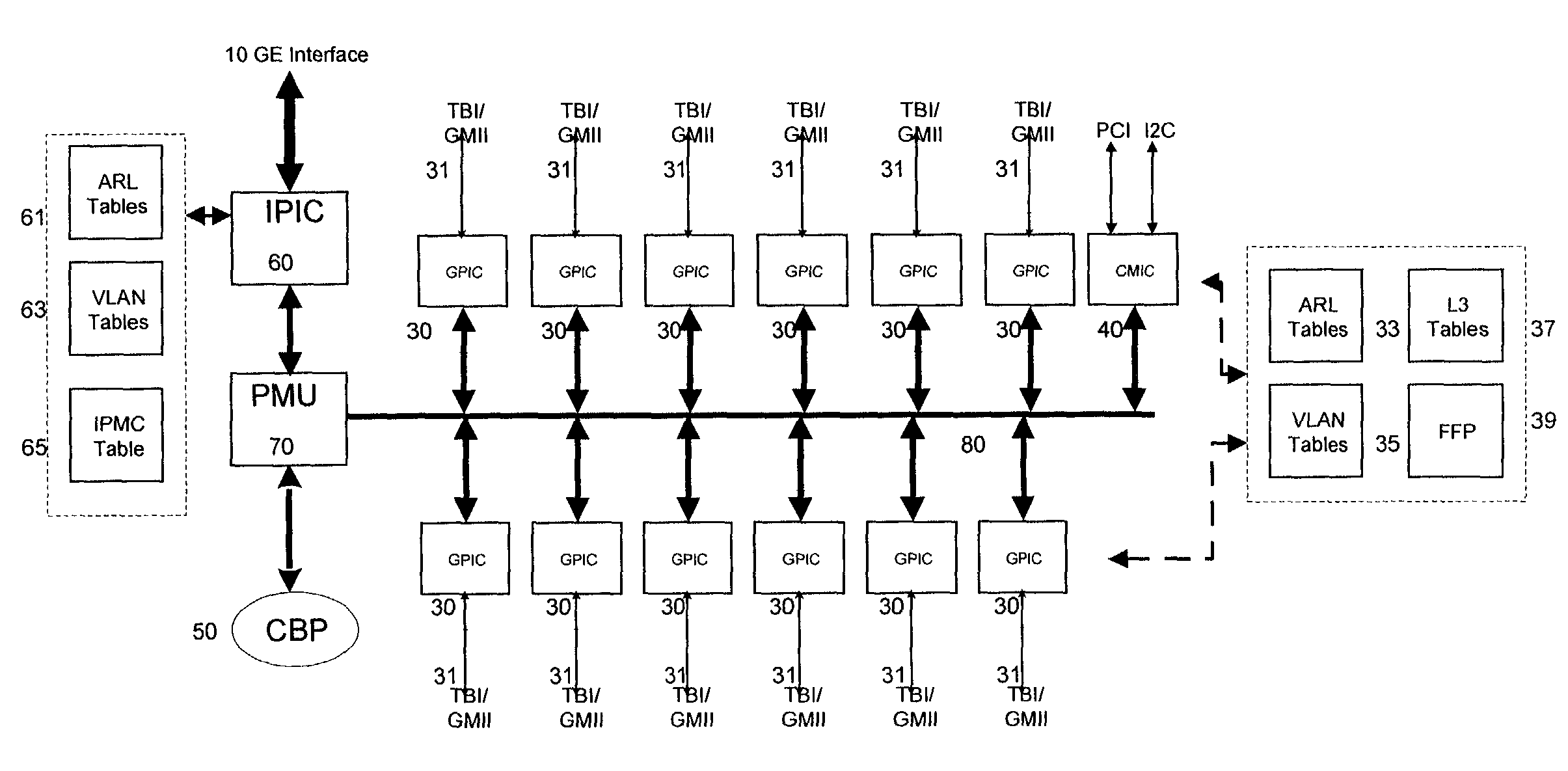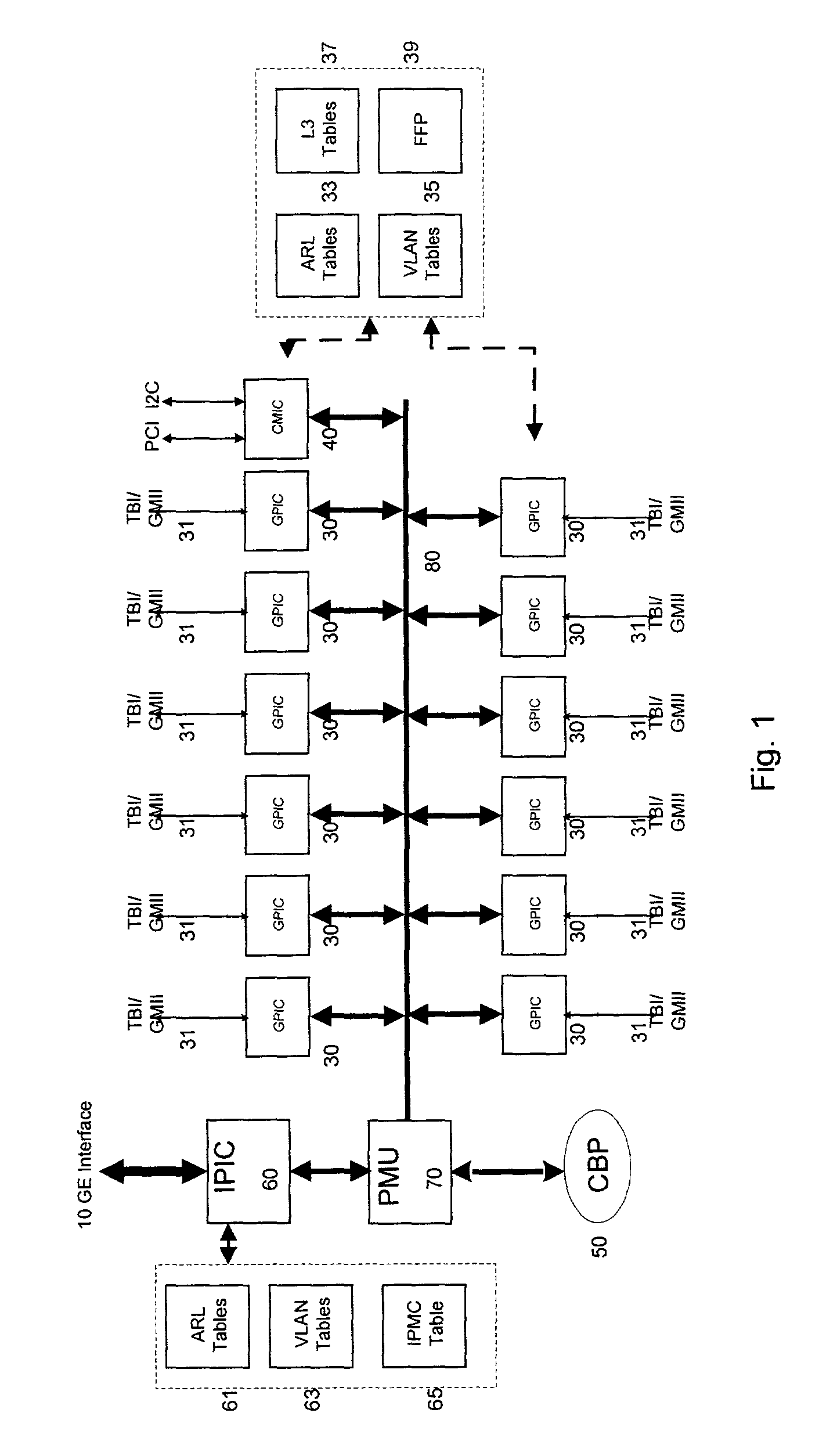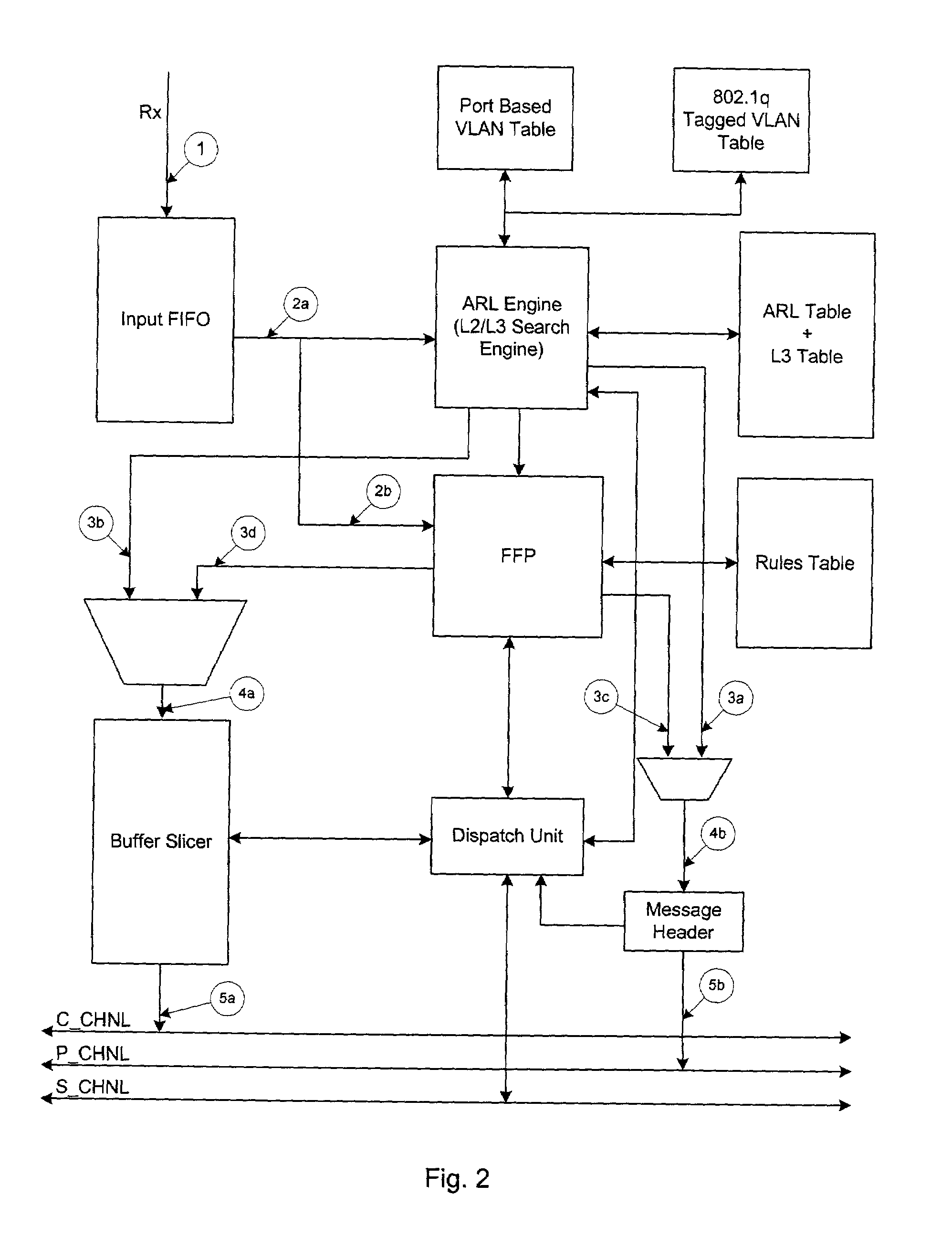Trunking and mirroring across stacked gigabit switches
a gigabit switch and gigabit mirror technology, applied in data switching networks, instruments, high-level techniques, etc., can solve the problems of increasing design requirements, increasing design complexity, and relatively slow conventional dynamic random access memory (dram) speed, and achieves fast throughput, improved mirroring of ports, and high bandwidth
- Summary
- Abstract
- Description
- Claims
- Application Information
AI Technical Summary
Benefits of technology
Problems solved by technology
Method used
Image
Examples
case b
[0245]The following rules are applied to conflicts:[0246]Rule 1.—When there is a conflict of actions across the filters, then the action associated with the highest filter is carried out.[0247]Rule 2.—When there is conflict of actions within the same filter, the following priorities hold. Six cases are possible.[0248]CASE A: Conflict in 802.1p priority, then change 802.1p priority—Action 0 (Medium) and change TOS to 802.1p—Action 8 (Low)[0249] Conflict in COS Queue, then change Priority 802.1p—Action 0 (Medium), re-map to new COS—Action 1 (Low), and change TOS to 802.1p—Action 8 (Low Low)[0250]CASE C: Conflict in TOS / DiffServ Field, then change TOS_P field—Action 2 (Medium), change COS to TOS_P—Action 9 (Low); and DiffServ—Action 10 (High)[0251]CASE D: Action bits 5 and 11, select Output port—Action 5 (Low) and select Output port, Output Module Id—Action 11 (High).[0252]CASE E: Action bits within the same IMASK, then select FFP Drop (Low) and select FFP No-Drop (High)[0253]CASE F: A...
PUM
 Login to View More
Login to View More Abstract
Description
Claims
Application Information
 Login to View More
Login to View More - R&D
- Intellectual Property
- Life Sciences
- Materials
- Tech Scout
- Unparalleled Data Quality
- Higher Quality Content
- 60% Fewer Hallucinations
Browse by: Latest US Patents, China's latest patents, Technical Efficacy Thesaurus, Application Domain, Technology Topic, Popular Technical Reports.
© 2025 PatSnap. All rights reserved.Legal|Privacy policy|Modern Slavery Act Transparency Statement|Sitemap|About US| Contact US: help@patsnap.com



